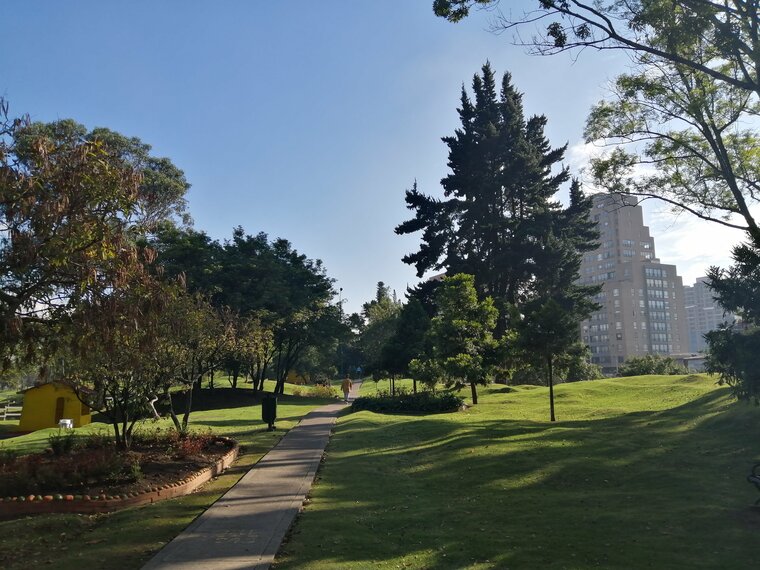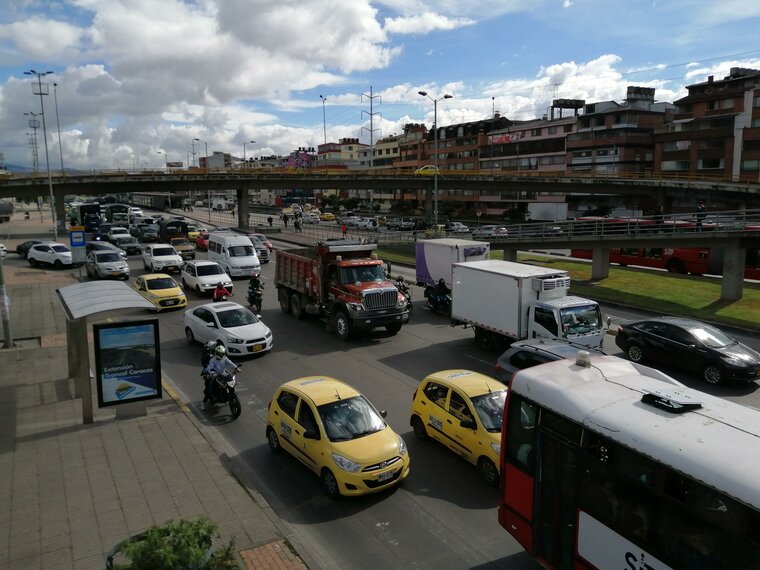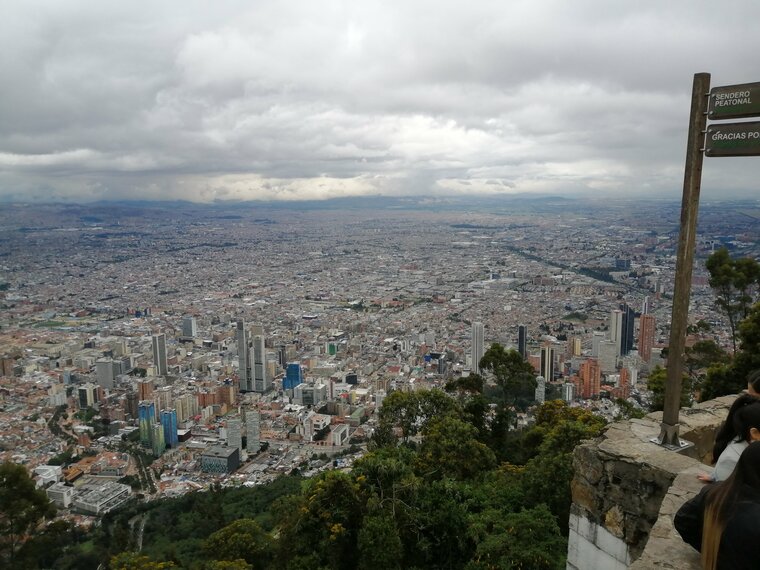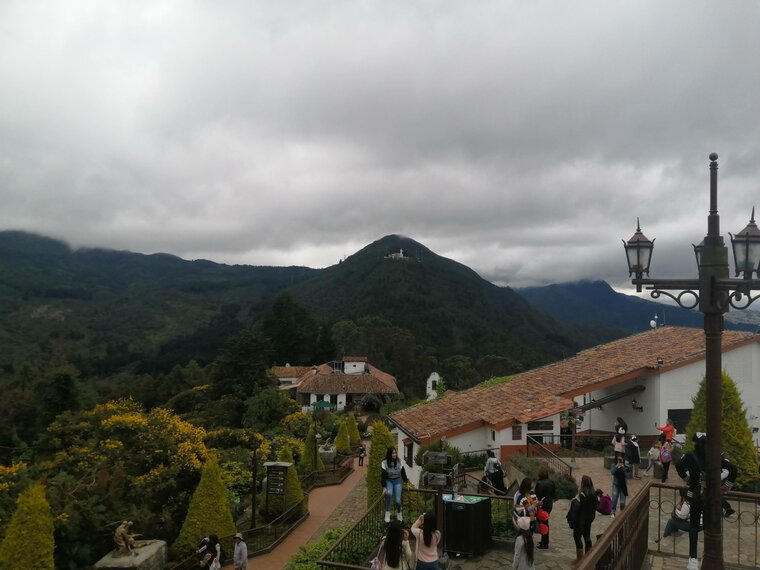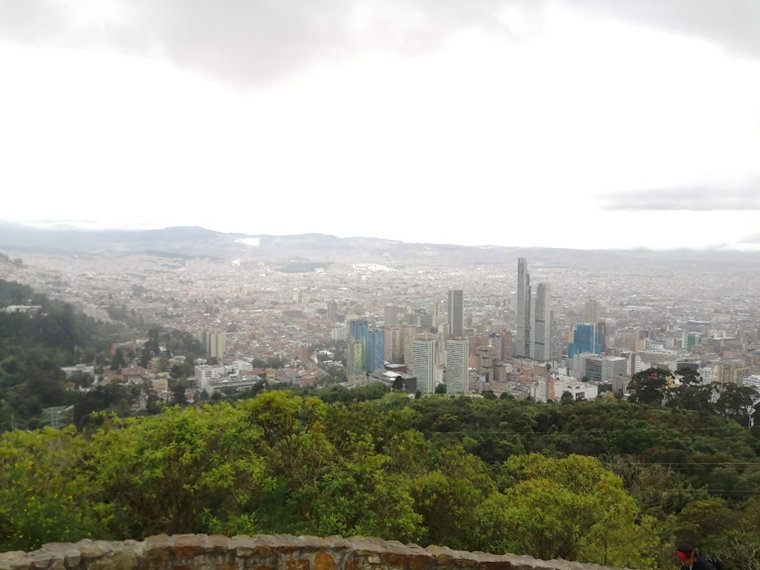
Bogota, Colombia
Arrival
I have never been outside of Europe before therefore it was a really big step for me. I had many things to worry about. My name was wrong on my Ticket (Tkesi, because it didn't recognise the ő), and I didn't have a return ticket, which could have been a problem by entering Colombia. Ohh, and of course there are all those things what you can hear about Colombia, Guerilla fights, poverty, security issues.
Some of these may be a real issue, but everything turned out just right. The immigration control had two stations. First they only asked where I'm going to stay here. I wasn't expecting that kind of question so I was really nervous, I tried to look it up on my phone but of course I had no internet, the airport wifi was complicated to use etc. But finally I found the information, and I already had a stamp in my passport. I thought I was ready, I was happy, I got in! I'm in Colombia! But I wasn't ready yet. After picking up the luggage there was another control. I was asked if I prefer Spanish or english. I said both are fine. The policewoman asked something in spanish. I didn't hear a word. Then she tried in english as well, and I still didn't understand anything, and after this she sent me to an armed soldier. I was really afraid for a moment, but it turned out that she only sent me there because the soldier could speak better english. He Only asked how much cash I have. I said 100 Euro and then he let me go and from that moment I was officially in Colombia:)
Then I changed some money, and went to the bus station. I asked from a man, where can I buy tickets, he didn't knew, but he said it is okay. I didn't understand why he is saying that, so I asked two girls as well, and they kinda said the same thing and at that moment the bus already arrived, and they told me to just go up, and then I realised that they paid with their card for my journey. People here are just too nice. Then I got out from the bus at the same station with the man I asked first. He wanted to make sure that I knew where I was going and that everything was fine, he also called my accommodation, and walked with me to the door. It's crazy how nice the people are here. At the accommodation I talked a little to the lady here, and I went to sleep pretty soon because I was super tired.





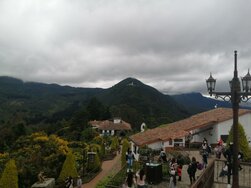
Monserrate
is a small church located in Bogotá on a mountain which is 500 m above the city, and 3152 above sea level. There are many ways to get up there. You can use a cable car, some kind of train, and you can walk 2,5 km. I chose walking. First I got a bit lost. I went up some streets which were probably a little bit dangerous, however I quickly found the right path. There were signs, and a group of street vendors, which showed that it must be a place for tourists. On the way up I think I saw at least 30 police officers, so we can say that security is not a problem here. It was really hard to get up there, though. This was the first time, when I felt that there is really less air. I wanted to go up quickly, but my lungs always said:not this time. There was an old man who I continuously overtook, but then I had to stop regularly, because I didn’t have enough oxygen. We arrived at the same time to the top. :D This was also the first place in Bogotá where I met foreign tourists. I heard American, German and French voices.
One of my favorite storie from Bogotá when I was just walking on the street on my way to Monserrate and a guy asked me for some help, I didn't undorstand it at first, so he repeated it with perfect english. A few second later there were already 3 people helping to push the car out of the garage. We did the the job he thanked us and we left with that good feeling, that we could help to a stranger. :)
Is Bogotá really that dangerous?
The short answer is no. When I arrived I was a little bit afraid. I couldn't ignore all those articles about safety here. My biggest fear was, that I'll get robbed on my way to the acommodation on my very first day. Well, nothing like that happened. I only met super nice people who helped me to get to my place. Next day I was walking around in the neigborhood, where I stayed. It's clean and quiet with many parks where people go with their dogs on the mornings. Soon I learned that this is one of the best places in Bogotá.
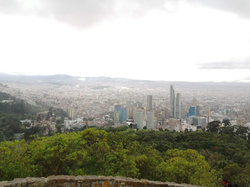


Next day I walked to a mall it was surounded by uglier streets, with a lot of shops, people who were selling things on the streets and many people. But still, here was nothing to worry about. And police are every corner on the streets, inside the mall there were dozens of private security guards. I know there has to be a reason for that many police and private security, but I didn't see anything. Locals said, that they know that europeans are afraid when they see the police, here it is the opposite. You have to start worry when you haven't seen police for a while.
Like I wrote about Monserrate. In every hundred meters there were standing police officers. In the city center, La candelaria, as they call here, are many as well. They really make it safer.
You can read in many articels that tourist shoudn't go below the 6th street. Well it's true. Police seems to disappear here, the buildings are poorer. I didn't go too deep on that part, but I didn't see much to worry about. However I was really curious, I had to dig deeper I had to find a place which seems really dangerous, and well, I found it.
Google Street view of the place where I went
I took the wrong bus when I wanted to go home from the Monserrate. I realised it soon, but I decided to stay on the bus. I was curious where will it take me. Well it took me all the way to the west. I was walking around for like 15 minutes, and to be honest. I was afraid. I tried to act normal, like I know where I am and where I am going, but people were looking at me, they knew that I don't belong there.
I was lucky this time, even though I was actually looking for trouble, it didn't found me. There are many dangerous places, pickpocketing is an everyday thing here. You always have to be careful when you use your phone on the streets. Never stay too long on the same place because there can be always somebody who is just waiting for the right moment to take your money.
Transportation in Bogotá
I had never been to a city as populous as Bogotá before. Its area is smaller than Budapest's, but its population rivals that of Hungary. Solving the transportation of 8 million people is no small task. At first glance, it seems a bit chaotic, but appears to be working. From a European perspective, public transportation can be considered cheap, but compared to the quality of service and local wages, it's rather expensive, especially since you can't buy a monthly pass. A 90-minute ticket costs around $0.65, but if you switch between types of transportation, it counts as a new trip. You can pay with a small magnetic card that can be purchased for $1.60, then you need to load money onto it and pay on buses by tapping. I think this system is quite practical.
Regular buses
More than 2000 tiny buses with 10-15 seats roam the roads everywhere. The stops only show which buses stop there, it's not worth talking about a schedule. Although there is an app for it, which can be relied on roughly. In the busier stops, several buses pass by every minute, but they run very erratically. You have to wave them down to make them stop, but sometimes the driver doesn't feel like stopping and simply drives on.
TransMillenio
This is a closed-track rapid bus network. The city is very proud of it and it really is a cleverly designed system, but it's simply unable to meet the demands. During rush hour at the busiest junctions, buses follow each other every 5-6 seconds, but even so, you can only get on with sufficient determination. People are forced to stand in front of the door, blocking those getting off, because if they don't, they won't be able to get on. I let three buses pass before I managed to shed such ridiculous European habits as standing aside from the door.
Road traffic
Based on time wasted in traffic jams, Bogotá is one of the worst cities in the world. I found two lists. On the first one, it's ranked second behind Mumbai, in the other, it's third behind Istanbul and Moscow. At first glance, it doesn't even seem that bad. The traffic is huge with 3-4 lane roads packed with cars, but they're moving everywhere, stationary lines of cars are rarely seen.
What's striking is the incredible number of taxis. They're also conspicuously yellow here and it's easy to determine that at least half of the cars are taxis, which is understandable. Considering the flaws of public transport. The price of taking a taxi is ridiculously cheap, we paid 580 HUF (about $1.90) for a 4-5 km trip. So taxi use is very common here and you can hail a free vehicle anywhere, anytime in a minute.
There are only more motorcyclists than taxis, it's hard to judge, but it really seems like there are more of them than car drivers. The motorcyclists zigzagging to the front at red lights sometimes make it look like I'm watching a motorcycle parade. They're easy to understand too. They can move faster in traffic jams, and the weather is suitable for motorcycling all year round except for a couple of sudden downpours.
And of course, there are the cyclists, who are also numerous and the infrastructure serving them isn't hopeless either. There are many completely separated two-lane bike paths in the city, in many places marked with conspicuous colorful paint similar to Budapest, but apparently something isn't quite right with this infrastructure, because you generally see more cyclists on the multi-lane roads among the cars than on the bike paths.
Bogotá, 2019.09.28.
